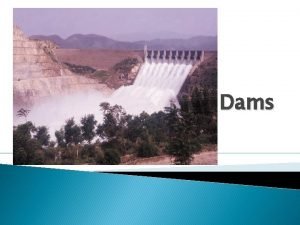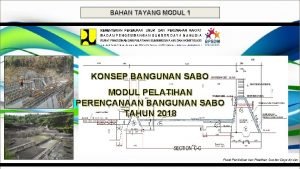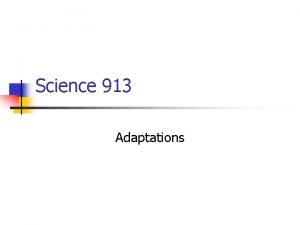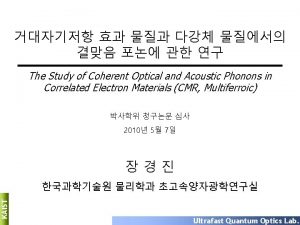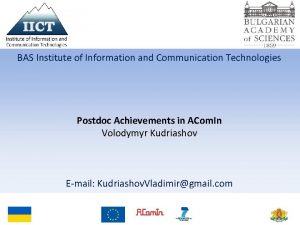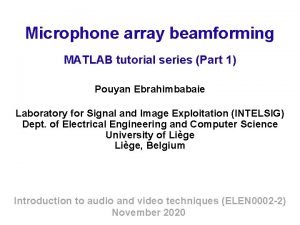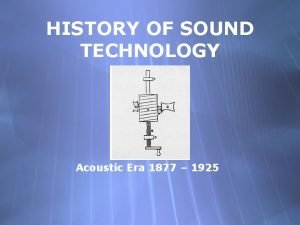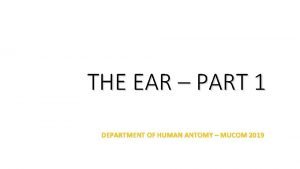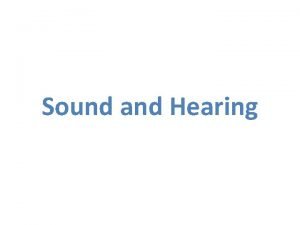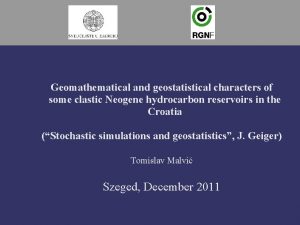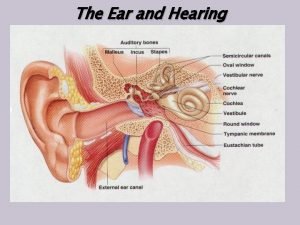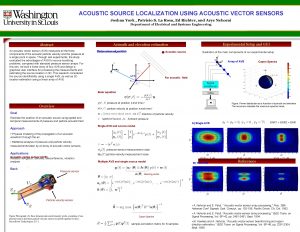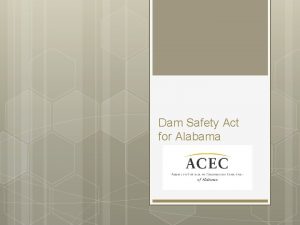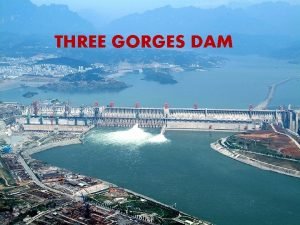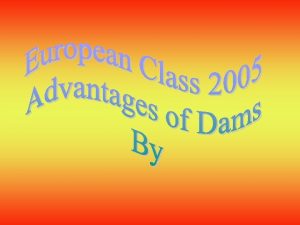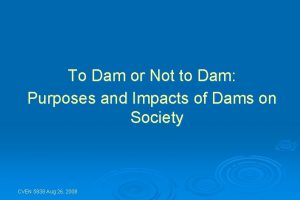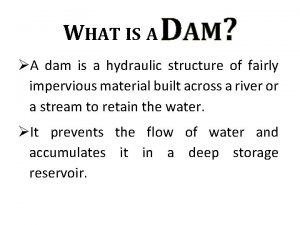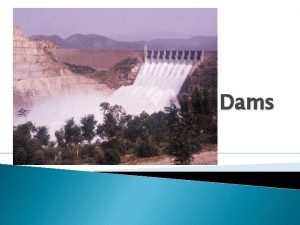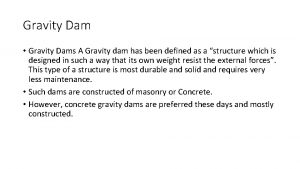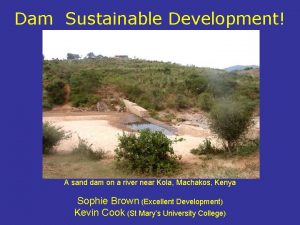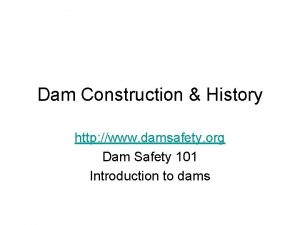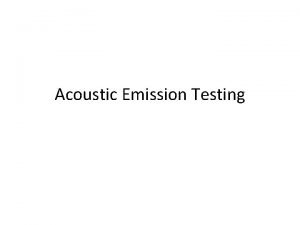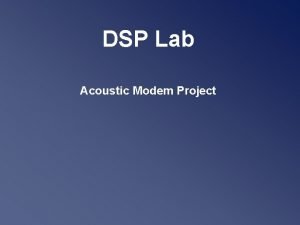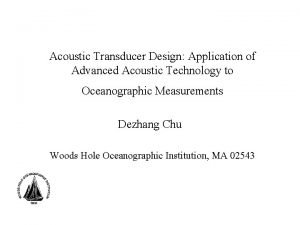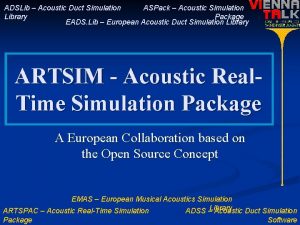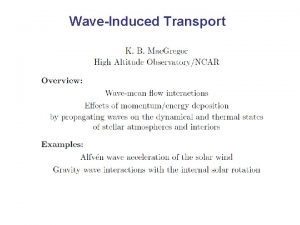Evaluation of the Cougar Dam PFFC using acoustic






















- Slides: 22

Evaluation of the Cougar Dam PFFC using acoustic telemetry John Beeman, Hal Hansel, Amy Hansen, Gabriel Hansen, Scott Evans, Philip Haner, Tyson Hatton, Eric Kofoot, Kyle Martens, Jamie Sprando, Matt Sholtis, Collin Smith, Nick Swyers, Noah Adams USGS, Western Fisheries Research Center Columbia River Research Laboratory Cook, WA 98605 U. S. Department of the Interior Geological Survey U. S. Willamette Review, February 11, 2015

Outline • • Study fish, monitoring methods Numbers collected by PFFC, etc. 3 reasons it did not work better Summary

Fish and Tags What • 12 mm PIT tags – 495 on June 4 – 1, 010 on October 22 – Antennas in PFFC and downstream • Acoustic (0. 43 g) + PIT tags – 434 from April 9 – May 21 • (incl. 4 wild) • 144 d tag life (90%) – 4 hydrophones at forebay log boom, 26 in cul-de-sac, others in tower and downstream Why • Overall catch of medium-size fish (surrogates) – Spring 65– 93 mm FL µ=76. 7 – Fall 71– 180 mm FL µ=154. 5 • Where, What, When, Why – 104– 180 mm, µ= 163. 6 – Mostly surrogates All fish released near the head of the reservoir

Operating Conditions • Before (5/16 – 5/27) • Low (~50 cfs) or High (~100 cfs) inflow – Randomized block schedule, 5/27 -10/28 • 7 -d treatments, 14 -d blocks PIT antenna ~3 m 18 m 2. 7 m

Metrics (by the numbers) • Travel Percentages – % released reaching forebay log boom – % @ BRZ reaching cul-de-sac • % of those w/ position estimates – % cul-de-sac within 10 m & 1 m of PFFC entrance • Total number captured in PFFC • Capture Efficiency (JSATS+PIT only) – A: PFFC / (PFFC + WTC) ; WTC / (PFFC + WTC) – B: PFFC / # in cul-de-sac; WTC/# in cul-de-sac

Where Fish Were: Utilization Distributions Date range May 18 – October 28, 2014 N ≥ 9 obs, gap ≤ 0. 5 hour = 1 trip Dynamic Brownian Bridge Mov. Model Probability of being in a 5 x 5 m cell Average within fish, then among fish UTM Northing(m) Low inflow, daytime, 0 -3 m depth Pos itio ns N = 129 Low inflow, daytime, 0 -3 m depth to pro bab iliti es UTM Easting(m) Kranstauber et al. 2012. A dynamic Brownian bridge movement model to estimate utilization distributions for heterogeneous animal movement. Journal of Animal Ecology 81: 738 -746. N = 129 UTM Easting(m)

During PFFC ops (> 5/27) Total What: Many Fish Within 10 m, Few Nearer Category N Released 434 -- Detected at Log Boom (in total) 399 91. 9 Det. @ Log Boom during PFFC ops 223 -- Detected in Cul-de-sac 214 96. 0 Positioned in Cul-de-sac 213 99. 5 Within 10 m of PFFC (@ 0 -3 m deep) 144 67. 6 Within 10 m of PFFC (@ 0 -6 m deep) 183 85. 9 Within 1 m of PFFC (@ 0 -3 m deep) 0 Within 1 m of PFFC (@ 0 -6 m deep) 11 Percent 0 5. 2

What: Few Tagged Fish Collected by PFFC Category JSATS + PIT Only N Detected in PFFC 2 2 N Captured in PFFC 1 2 N Passing Tower (total) 42 na N Passing Tower (PFFC ops) 13 na * Collection Efficiencies Result Definition Collection Efficiency (A) 7. 1% (92. 9% at tower) PFFC/(PFFC+Tower) Collection Efficiency (B) 0. 5% (6% at tower) PFFC/# in cul-de-sac * = 3 unique fish Estimated PIT detection probability ~ 95%

Why #1 a: The PFFC OPS Started Late PFFC OPS BEGAN

Why #1 b: Fish Deeper in Summer 0 -3 m = 55% 3 -6 m = 16% 0 -3 m = 35% 3 -6 m = 24% 0 -3 m = 16% 3 -6 m = 20% 0 -3 m = 11% 3 -6 m = 13% 0 -3 m = 28% 3 -6 m = 15% 0 -3 m = 25% 3 -6 m = 15% Depths of acoustic-tagged fish in the cul-de-sac

Why #2 a: Poor PFFC Location Low, High, Day, Night were similar Average of Before, Low, High ops. Utilization Distribution 0– 3 m depth

Why #2 a: Poor PFFC Location Low, High, Day, Night were similar Average of Before, Low, High ops. Utilization Distribution 3– 6 m depth

Why #2 a: Poor PFFC Location Low, High, Day, Night were similar Average of Before, Low, High ops. Utilization Distribution 0– 6 m depth

Why #2 b: Few Fish near Entrance Utilization Distributions of fish within a 20 m radius of the PFFC entrance High Inflow Day High Inflow Night Low Inflow Day Low Inflow Night

Why #3: Those Nearby Not Attracted Fish within a 20 -m radius of PFFC entrance with ≥ 2 positions within a 10 m radius Depth <= 3 m Depth > 3 m Large circle = start of fish track Axes = distance (m) from center of PFFC entrance High Inflow, Day

Why #3: Those Nearby Not Attracted High Inflow, Night

Why #3: Those Nearby Not Attracted Low Inflow, Day

Why #3: Those Nearby Not Attracted Low Inflow, Night

Why #3: Those Nearby Not Attracted Rose plots indicating headings of fish at 0 -3 m depth within a 10 m radius of PFFC entrance 10 m radius 0 – 3 m depth 4 m 5 m Low Inflow, Day

Summary (1 of 2) • Few fish collected by PFFC • Evidence from tagged fish supports “WHY? ” = – Late start • Fish depths unfavorable in summer – Poor location relative to fish locations • Few fish near entrance – Fish nearby not attracted • Few closer than 10 m • Those nearby traveling across rather than towards

Summary (2 of 2) • Corroborating evidence: – Unfavorable inflow velocities (previous presentation) – Rejection within PFFC (next presentation) • Recommendations following modifications – Position based on existing fish and hydraulic data – Continue multi-method evaluation • Uncertainties – Effects of PFFC outflow on fish behavior

Acknowledgements • USACE: • David Griffith, Wes Hively, Andrew Janos, Todd Pierce, Mary Karen Scullion • Wild Fish Surrogate Program • Eric Billman, Rob Chitwood, Karen Cogliati, Carl Schreck • Staff at Leaburg Hatchery • Seth Morgan, Erik Withalm • Eugene Water and Electric Board • USGS staff • Craig Haskell, Glen Holmberg, Russell Perry
 Rigid dam
Rigid dam Perbedaan sabo dam dan check dam
Perbedaan sabo dam dan check dam Cougar structural adaptations
Cougar structural adaptations Welcome us bank
Welcome us bank Collin college help desk
Collin college help desk Totem pole badger
Totem pole badger Cougar lacrosse club
Cougar lacrosse club Cougar connect csu
Cougar connect csu Cascade ridge ptsa
Cascade ridge ptsa Acoustic magazine uk
Acoustic magazine uk Optical vs acoustic phonons
Optical vs acoustic phonons B&k acoustic camera
B&k acoustic camera Beamforming matlab
Beamforming matlab Baryonic acoustic oscillations
Baryonic acoustic oscillations Acoustic era
Acoustic era Mail @ greenbuildingencyclopaedia.uk
Mail @ greenbuildingencyclopaedia.uk Antomy of ear
Antomy of ear Acoustic stimulus is
Acoustic stimulus is Acoustic impedance
Acoustic impedance External auditory meatus
External auditory meatus What is the function of the external acoustic meatus
What is the function of the external acoustic meatus External acoustic meatus
External acoustic meatus Rollover phenomenon in acoustic neuroma
Rollover phenomenon in acoustic neuroma
